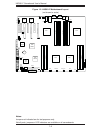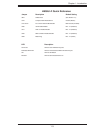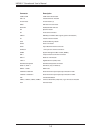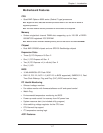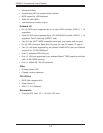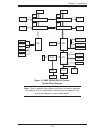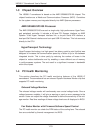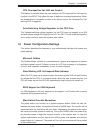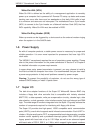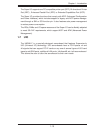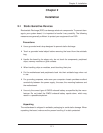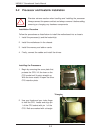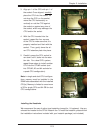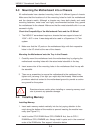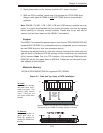
1-12
H8QI6/i-F Serverboard User’s Manual
Wake-On-LAN (WOL)
Wake-On-LAN is defi ned as the ability of a management application to remotely
power up a computer that is powered off. Remote PC setup, up-dates and access
tracking can occur after hours and on weekends so that daily LAN traffi c is kept
to a minimum and users are not interrupted. The motherboard has a 3-pin header
(WOL) to connect to the 3-pin header on a Network Interface Card (NIC) that has
WOL capability. Wake-On-LAN must be enabled in BIOS.
Wake-On-Ring Header (WOR)
Wake-up events can be triggered by a device such as the external modem ringing
when the system is in the SoftOff state.
1-6 Power Supply
As with all computer products, a stable power source is necessary for proper and
reliable operation. It is even more important for processors that have high CPU
clock rates.
The H8QI6/i-F serverboard requires the use of proprietary power supplies. Please
refer to the pinout information for the power connectors in Section 6 of Chapter 2
for detailed information on power requirements.
In areas where noisy power transmission is present, you may choose to install a
line fi lter to shield the computer from noise. It is recommended that you also install
a power surge protector to help avoid problems caused by power surges.
Warning: To prevent the possibility of explosion, do not use the wrong type of
onboard CMOS battery or install it upside down.
1-7 Super I/O
The disk drive adapter functions of the Super I/O Winbond® Hermon BMC chip
includes a fl oppy disk drive controller that is compatible with industry standard
82077/765, a data separator, write pre-compensation circuitry, decode logic, data
rate selection, a clock generator, drive interface control logic and interrupt and DMA
logic. The wide range of functions integrated onto the Super I/O greatly reduces the
number of components required for interfacing with fl oppy disk drives.
The Super I/O provides two high-speed, 16550 compatible serial communication
ports (UARTs), one of which supports serial infrared communication. Each UART in-
cludes a 16-byte send/receive FIFO, a programmable baud rate generator, complete
modem control capability and a processor interrupt system. Both UARTs provide
legacy speed with baud rate of up to 115.2 Kbps as well as an advanced speed
with baud rates of 250 K, 500 K, or 1 Mb/s, which support higher speed modems.



